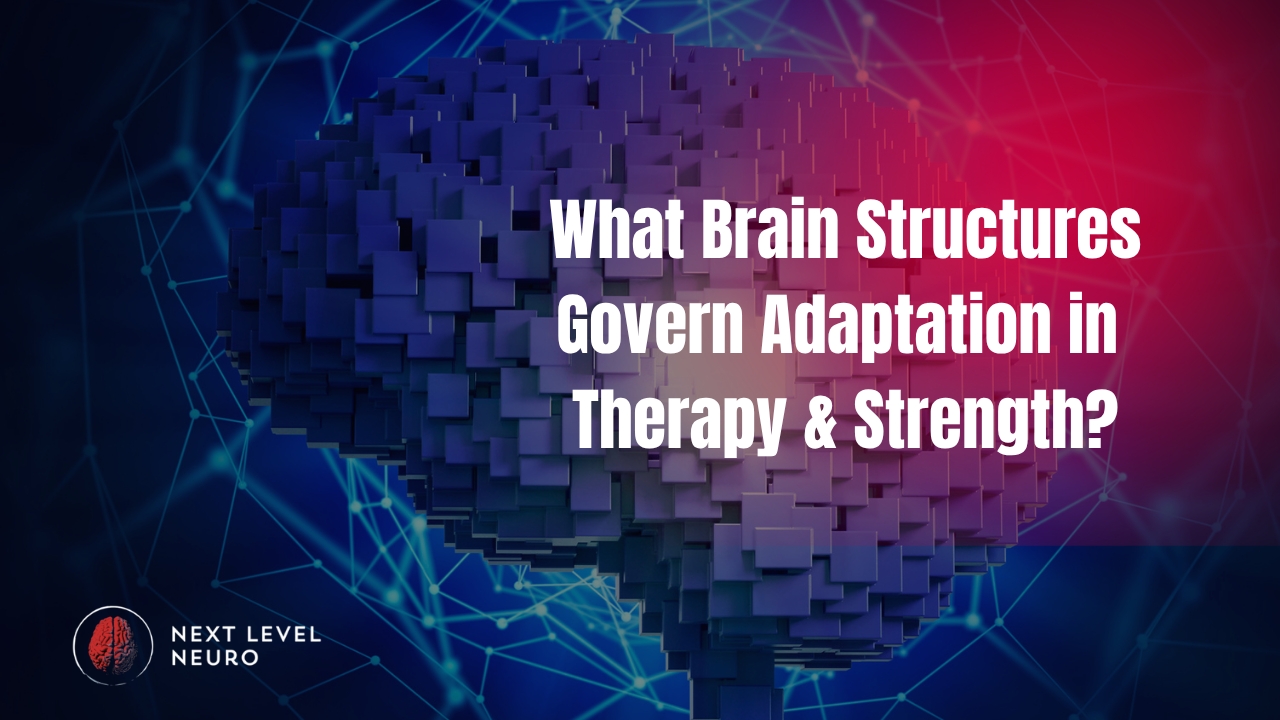The Nervous System Is the New Frontier in Rehab & Strength
Nov 12, 2025
Why Neural Adaptation Changes Everything
Over the last decade, our understanding of human performance has been transformed.
Strength still matters.
Movement quality still matters.
Mindset still matters.
Yet none of these can reach their full potential when the nervous system struggles to adapt.
The science is becoming unmistakable.
Adaptation begins in the brain.
The body follows whatever the nervous system believes is safe, efficient, and possible.
When the brain feels safe, strength builds naturally. When it does not, progress stalls, and even the best program cannot overcome that protective ceiling.
The future of rehabilitation is already shifting in this direction, and the professionals who recognize it will LEAD the next era of performance.
The Future of Rehabilitation and Performance
The coming decade will NOT BE shaped by new gadgets, new assessments, or new corrective exercises.
It will be shaped by how deeply clinicians understand the brain that drives them.
Every manual technique, every cue, and every exercise travels through the nervous system before it reaches the body.
The brain decides how to interpret the experience.
It decides what is threatening and what is safe.
It decides whether to unlock strength or hold it back.
Once you understand this, the entire landscape of rehab begins to change.
A tight hamstring may not be about tissue.
It may be a nervous system protecting unstable sensory input.
A stubborn shoulder may not be about mobility.
It may be the brain guarding a joint it does not trust.
A client who repeatedly “falls apart” under stress may not need discipline.
They may need better state regulation.
When you train the nervous system first, everything downstream becomes more efficient.
In one of our mentorship sessions, we summarize it this way:
“You are not fixing your clients. You are helping their brain update the map of what is safe. When that map updates, strength, focus, and behavior all follow.”
This is what we call the neuro-adaptive model.
It is the shift from fixing tissues to training the system that controls those tissues.
It is the shift from correcting mobility to creating safety in the areas that govern mobility.
It is the shift from chasing symptoms to shaping perception and prediction inside the brain.
When the brain updates its map, the body unlocks its potential.
The Brain Structures That Govern Adaptation
Neural adaptation is not a mystical concept.
It comes from very real regions of the brain that shape how clients respond to stress, effort, and load.
Here are the four major structures that determine how someone adapts:
1. The Amygdala
The threat detector.
It constantly asks, “Am I safe.”
If the answer is no, strength declines, mobility tightens, coordination falls apart, and pain increases.
Helping clients feel safe is not emotional support.
It is performance science.
2. The Midbrain
The movement integrator.
It ties together balance, vision, vestibular input, and spatial orientation.
When it is confused or overwhelmed, movement becomes stiff, inefficient, or unpredictable.
3. The Hypothalamus
The internal regulator.
It controls sleep, energy, temperature, appetite, recovery, and hormonal output.
If this system is strained, recovery becomes inconsistent, even when training is perfect.
4. The Prefrontal Cortex
The executive governor.
It manages focus, planning, emotional control, and decision-making under pressure.
When this system is overloaded, clients cannot tolerate stress or follow through with training.
These four structures shape how clients move, recover, think, and feel.
They decide whether your intervention creates change or creates resistance.
If you can read them and train them, you can create faster progress with less effort.
Bringing It Together
Neural adaptation is not an idea on a whiteboard.
It is a practical skill set that can be trained, measured, and improved.
It begins with learning to observe the nervous system.
It grows through consistent testing.
And it becomes powerful when it is woven into every aspect of client care.
The nervous system is plastic.
It can learn quickly.
It can reorganize itself at any age.
It can build resilience even in people who believe they have lost it.
When we teach the nervous system to adapt instead of react, we create:
• Faster recovery
• Deeper resilience
• More consistent strength
• Less emotional reactivity
• Better long-term outcomes
This is the next frontier of rehabilitation.
It is not about doing more.
It is about doing what the brain can receive.
When treatment matches the nervous system’s capacity, change becomes predictable instead of accidental.
Strength begins in safety.
Performance begins in perception.
Adaptation begins in the brain.
Want to Learn More About These Brain Structures?
Click this link to watch our FREE Masterclass on this.
This blog is only the introduction.
Over the next several weeks, we will be releasing a full series inside the NLN Newsletter that breaks down:
• How the amygdala restricts strength and how to calm it
• How the midbrain shapes movement quality and balance
• How the hypothalamus controls recovery and fatigue
• How the prefrontal cortex impacts focus, resilience, and behavior
• How all four systems work together to determine adaptation
• The most reliable drills to influence each one
If you want the deeper science, practical tools, and real-case examples that help you master neural adaptation, join the newsletter and receive the full series.
The therapists and coaches who understand these systems are the ones shaping the future of our field.
You can be one of them.
Do you want more education on Applied Neurology?
Here are some of our courses to check out.
The Neuro Advantage Course: Intro Applied Neurology Course
Neuro Fundamentals: Self-Taught 8-hour Applied Neurology Course
Year-Long Mentorship: Year-Long Mentorship and Education
Want more information on our Mentorship and Programs?
We hate SPAM. We will never sell your information, for any reason.

